Ever found yourself mid-recipe only to realize you’re fresh out of preserved lemons? Yep, we’ve been there.
It’s a bummer, right? Preserved lemons add a unique tang and depth to dishes that’s hard to replicate. Yet, here we are, all set to cook but missing that key ingredient.
No sweat!
We’ve all hit that culinary roadblock. I remember the first time I faced this dilemma; my Moroccan chicken seemed doomed. Yet, that moment pushed me to get creative in the kitchen.
Good news: we’ve got you covered with five fantastic substitutes.
These aren’t just any alternatives; they’re the best of the bunch. Ready to save your dish and possibly discover a new favorite kitchen hack?
What is Preserved Lemon?

Lemon cured in salt and spices and kept for a while transforms into preserved lemon.
It’s a pickled condiment popular in Moroccan, Indian and North African cuisine.
The original method uses only salt in the pickle, but modern varieties contain many components, including red chilies, turmeric, peppercorns, cinnamon, coriander seeds, sugar and fresh lemon juice.
You can add the spices to the condiment according to your preference.
The market has readymade stuff, but you can easily make it and use it in your dishes.
You can make the item simply using salt, lemons and a jar and allow them to sit for at least a month.
The technique lowers the lemons’ strong, tart taste and heightens their lemony essence.
Add it to rice, salads, stews, meat dishes, marinades, fish curries, salsa, barbeque, noodles and much more.
But if you don’t have the ingredient, check out what else you can use.
The 5 Best Substitutes For Preserved Lemon
Preserved lemon is a popular ingredient in many Mediterranean and Middle Eastern dishes, known for its unique tangy flavor and aromatic qualities.
However, if you don’t have preserved lemon on hand or are looking for alternative options, there are several substitutes available.
| Substitute | Key Characteristics | Proper Ratio |
|---|---|---|
| Lemon Zest | Intense lemon flavor, brightens dishes | Use the zest of 1 lemon as a substitute for 1 preserved lemon |
| Lemon Paste | Concentrated lemon flavor, convenient | Use 1 tablespoon of lemon paste as a substitute for 1 preserved lemon |
| Lemon Juice with Sea Salt Flakes | Tangy, salty, and vibrant | Use 1 tablespoon of lemon juice with a pinch of sea salt as a substitute |
| Lemon Skins Preserved in Salt | Similar flavor profile, requires advance preparation | Use 2-3 tablespoons of lemon skins preserved in salt as a substitute |
| Lemongrass | Citrusy, aromatic, adds depth to dishes | Use 1 stalk of lemongrass as a substitute, adjust according to preference |
Now let’s dive into each substitute in more detail:
1 – Lemon Zest
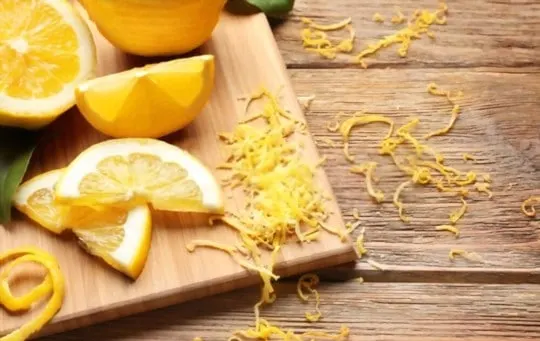
If you have fresh lemons at home, the zest can work pretty well as a replacement for preserved lemon.
The flavor and aroma are milder naturally, but it produces the essence of lemon.
It’s also easy to take out the zest, and you can cook your dish without wasting time.
You can use it in any dish that demands preserved lemon and come up with a delicious and aromatic dish.
Include it in marinades, soups, salads, stews and sauces.
You can add it to ice creams, desserts and baked products.
It can also be a delicious addition to dry rubs, meat and fish dishes.
Lemon zest is not only delicious but also contains a high amount of fiber and vitamin C.
it also has some magnesium, calcium and potassium.
So, it may offer several health benefits.
- Key Characteristics: Lemon zest offers an intense lemon flavor and adds brightness to dishes. It is the outermost layer of the lemon peel, grated or finely chopped. Use the zest of 1 lemon as a substitute for 1 preserved lemon to achieve a similar citrusy taste.
2 – Lemon Paste
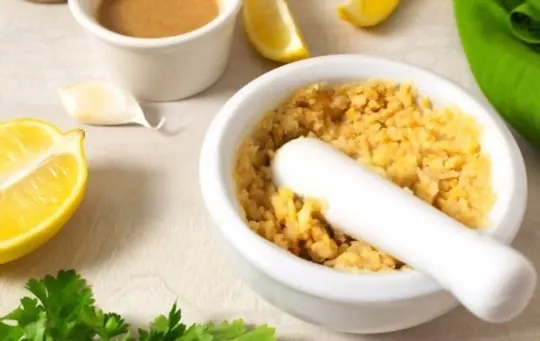
The next item as an alternative for preserved lemon is lemon paste.
You may spend some time making it, but it can be very useful when your favorite option is unavailable.
You can find readymade variety in the stores but can make at home also.
First, take a big lemon or two medium ones and chop off both ends.
Next, cut them into thin slices and put them in a pan with one tablespoon salt and four tablespoons of lemon juice.
Put a lid and boil it for about ten to twelve minutes or till the rind is almost transparent.
Once it cools down, use an appliance to make a paste.
You can add the required amount to any dish that demands preserved lemon.
But give a taste before adding salt.
- Key Characteristics: Lemon paste is a concentrated form of lemon juice that provides a strong lemon flavor. It is made from freshly squeezed lemon juice that has been cooked down and reduced. Use 1 tablespoon of lemon paste as a substitute for 1 preserved lemon, adjusting the amount according to the desired level of acidity.
3 – Lemon Juice with Sea Salt Flakes
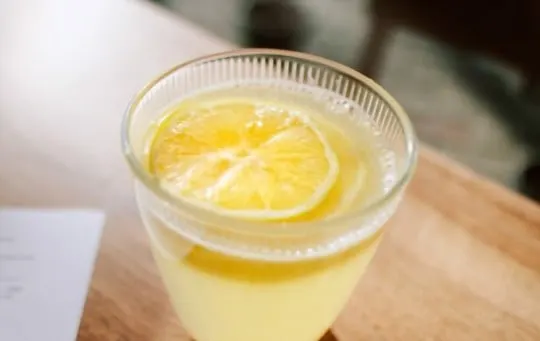
If you keep fresh lemons and sea salt flakes at home, you don’t have to worry even if you have preserved lemon.
A blend of salt and juice can give a fantastic flavor and aroma that will suit any dish you make.
Lemon juice alone may be more intense, but when you mix it with the sea salt flakes, you will have an ingredient close to preserved lemon.
Sea salt flakes are a popular condiment with chefs around the world.
The less refined is great to sprinkle on chocolate chip cookies or salads, while the refined is ideal for everyday cooking.
You can use either type of salt, depending on availability.
But the less refined variety is more expensive than the refined product.
Once you add it to lemon juice and it dissolves, you can use the product in various dishes.
- Key Characteristics: Mixing lemon juice with sea salt flakes creates a tangy and salty combination that can mimic the flavor profile of preserved lemon. Use 1 tablespoon of lemon juice with a pinch of sea salt as a substitute for 1 preserved lemon, adding depth and acidity to your dishes.
4 – Lemon Skins Preserved in Salt
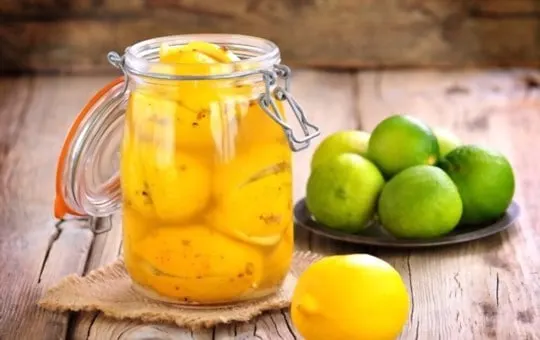
It’s another item that can replace preserved lemon in several recipes.
You can get a readymade product or make it quickly at home if you don’t have it.
You need some lemons, salt and a bottle.
Squeeze out all the juice from the lemon and cut them into slices the size similar to a rind of preserved lemon.
Add salt and mix them well and place the skins in the jar.
Keep it for up to an hour and use it as required.
The flavor and aroma will resemble preserved lemon if it sits for a more extended period.
But if it’s an emergency, you can use it in your dishes after resting it for one hour.
If you make a large batch, it will taste even better the next time you use it.
Lemon skin contains nutrients, and so its addition to your diet can be beneficial.
Apart from boosting immunity, it can lower the risk of heart diseases and stroke, manage weight and improve gut health.
- Key Characteristics: Lemon skins preserved in salt provide a similar flavor profile to preserved lemon. To make this substitute, remove the lemon skins, chop them into small pieces, and mix them with salt. Allow the mixture to sit for several weeks to develop the desired preserved flavor. Use 2-3 tablespoons of lemon skins preserved in salt as a substitute for 1 preserved lemon.
5 – Lemongrass
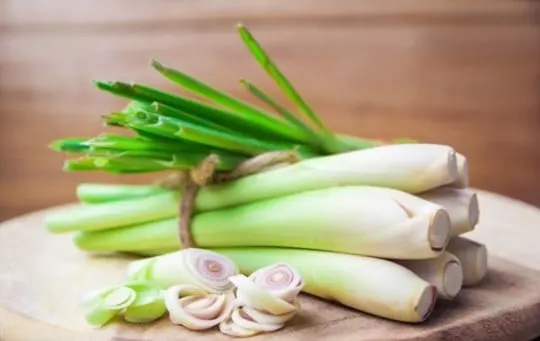
It’s the final item in this list and also the last option.
You can use lemongrass in your dish only when nothing else is available.
It’s a popular ingredient in Asian cuisine (Indian, Thai, Vietnamese, Indonesian) but can replace preserved lemon in other cuisines too.
Cooks and chefs use the delicate, white center portion for its distinct citrus flavor.
Earlier, people mainly used it in savory dishes, but chefs are now using it in desserts too.
When using lemongrass, remember to remove the stalk after cooking your food.
Besides, it’s only suitable to bring out the aroma of a preserved lemon and not the flavor.
So, you won’t have the tang and saltiness.
- Key Characteristics: Lemongrass is a versatile herb with a citrusy and aromatic flavor. While it doesn’t have the exact taste of preserved lemon, it can add a unique depth to dishes. Use 1 stalk of lemongrass, finely chopped or pounded, as a substitute, adjusting the quantity based on your personal preference.
Conclusion
Since preserved lemon has a distinct aroma and flavor, it can be hard to get the exact replacement.
However, all the items mentioned above can help in some ways.
Besides, it’s better to use something than nothing.
You can use the ingredients in your dish as the recipe demands it.
If there is no recipe, you can create your unique taste and come up with something delicious.
It can be refreshing, a surprise and fun.
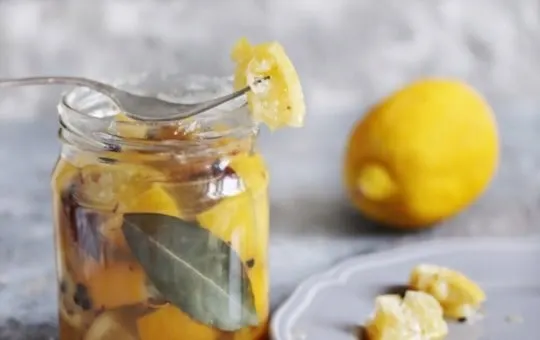
The 5 Best Substitutes for Preserved Lemon
Ingredients
- Lemon Zest
- Lemon Paste
- Lemon Juice with Sea Salt Flakes
- Lemon Skins Preserved in Salt
- Lemongrass
Instructions
- Pick your favorite substitute from the list above.
- Follow cooking directions for your selected substitute with the proper ratio of ingredients.

Andrew Gray is a seasoned food writer and blogger with a wealth of experience in the restaurant and catering industries. With a passion for all things delicious, Andrew has honed his culinary expertise through his work as a personal chef and caterer.
His love for food led him to venture into food writing, where he has contributed to various online publications, sharing his knowledge and insights on the culinary world. As the proud owner of AmericasRestaurant.com, Andrew covers a wide range of topics, including recipes, restaurant reviews, product recommendations, and culinary tips.
Through his website, he aims to inspire and educate fellow food enthusiasts, offering a comprehensive resource for all things food-related.

Leave a comment